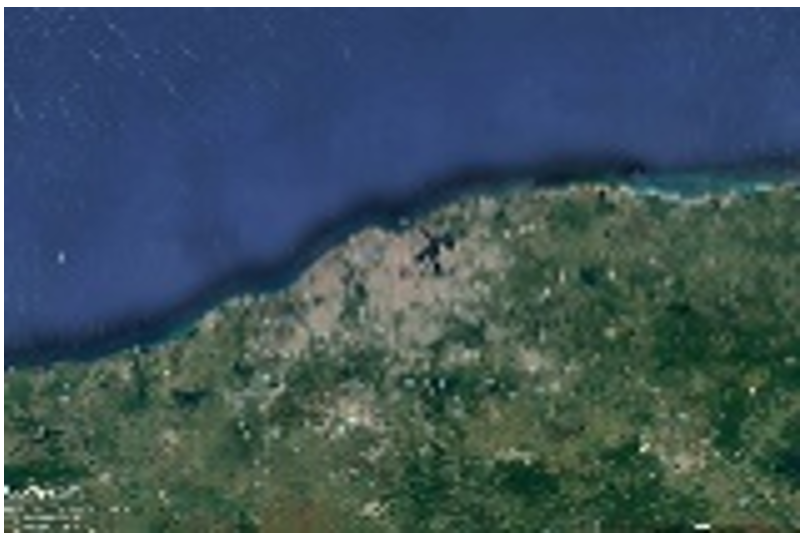Evaluation of the transport of atmospheric pollutants in Havana through the use of the HYSPLIT model
Main Article Content
Abstract
In Cuba there are no air quality monitoring networks. The objective of this study is to evaluate air pollution by particulate matter (PM) in Havana through the use of the HYSPLIT model. We used in situ measurements and satellite images of the Copernicus and Giovanni NASA platforms and they were compared with the different runs of the model to evaluate its effectiveness. The results obtained showed that although making measurements of particulate matter is always the first option, it can be affirmed that the use of models of transport and dispersion of pollutants, specifically the HYSPLIT model, are relevant for the estimation of atmospheric pollution by particulate matter in Havana.
Downloads
Article Details

This work is licensed under a Creative Commons Attribution-NonCommercial 4.0 International License.
Those authors who have publications with this journal accept the following terms of the License Attribution-NonCommercial 4.0 International (CC BY-NC 4.0):
You are free to:
- Share — copy and redistribute the material in any medium or format
- Adapt — remix, transform, and build upon the material
The licensor cannot revoke these freedoms as long as you follow the license terms.
Under the following terms:
- Attribution — You must give appropriate credit, provide a link to the license, and indicate if changes were made. You may do so in any reasonable manner, but not in any way that suggests the licensor endorses you or your use.
- NonCommercial — You may not use the material for commercial purposes.
- No additional restrictions — You may not apply legal terms or technological measures that legally restrict others from doing anything the license permits.
The journal is not responsible for the opinions and concepts expressed in the works, they are the sole responsibility of the authors. The Editor, with the assistance of the Editorial Committee, reserves the right to suggest or request advisable or necessary modifications. They are accepted to publish original scientific papers, research results of interest that have not been published or sent to another journal for the same purpose.
The mention of trademarks of equipment, instruments or specific materials is for identification purposes, and there is no promotional commitment in relation to them, neither by the authors nor by the publisher.
References
European Union’s Space programme. (2023). Copernicus Sentinel-5P data products. Sentinel Online. https://sentinels.copernicus.eu/web/sentinel/data-products
European Union’s Space programme. (2023). Sentinel-5P. Sentinel Online. https://sentinels.copernicus.eu/web/sentinel/missions/sentinel-5p
García Reynoso, J. A. (2010). Modelación de la Calidad del aire. Comisión Centroamericana de Ambiente y Desarrollo (CCAD). https://www.google.com/url?sa=t&rct=j&q=&esrc=s&source=web&cd=&cad=rja&uact=8&ved=2ahUKEwiowLncrcSCAxU2FlkFHXQ_A9cQFnoECBYQAQ&url=https%3A%2F%2Fwww.sica.int%2Fbusqueda%2Fbusqueda_archivo.aspx%3FArchivo%3Dodoc_72907_1_01102012.pdf&usg=AOvVaw1593cHiIVfH-VpiUaKTT7X&opi=89978449
Gutiérrez Quintero, V., Meneses Ruiz, E., Roig Rassi, A., Guevara Luna, M. A., y Belalcazar, L. C. (2021). Empleo de datos satelitales para estimación de contaminación atmosférica por material particulado en La Habana. Revista Cubana de Meteorología, 27(1). http://rcm.insmet.cu/index.php/rcm/article/view/550/1045
Herrero Anta, S. (2019). Caracterización de las propiedades ópticas y microfísicas de tres tipos de aerosoles atmosféricos durante tres eventos de alta turbiedad en Castilla y León [Trabajo fin de Grado en Física, Universidad de Valladolid]. UVaDOC. https://uvadoc.uva.es/handle/10324/40254
HYSPLIT. (s.f). Air Resources Laboratory. https://www.arl.noaa.gov/hysplit
NASA. (2023). Giovanni. https://www.usillife.pe/investigacion-y-desarrollo/web-giovanni-nasa/
Oficina Nacional de Normalización. (2014). Calidad del aire ― Metodología para modelar las afectaciones de la calidad del aire a escala local debido a las emisiones de contaminantes atmosféricos desde fuentes fijas. (NC 1059:2014). https://ftp.isdi.co.cu/Biblioteca/BIBLIOTECA%20UNIVERSITARIA%20DEL%20ISDI/COLECCION%20DIGITAL%20DE%20NORMAS%20CUBANAS/2014/NC%201059%20a2014%2081p%20hci.pdf
Stein, A. F., Draxler, R. R., Rolph, G. D., Stunder, B. J. B., Cohen, M. D., y Ngan, F. (2015). NOAA’s HYSPLIT Atmospheric Transport and Dispersion Modeling System. Bulletin of the American Meteorological Society, 96(12), 2059–2077. https://doi.org/10.1175/bams-d-14-00110.1

